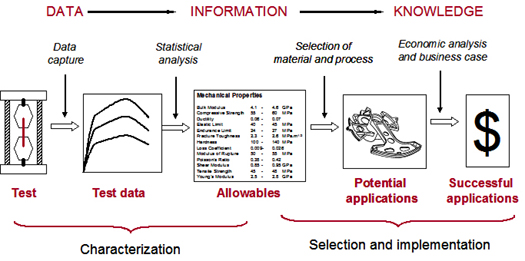|
|
| M A T E R I A L S C I E N C E & E N G I N E E R I N G |
|||||||
|
|
|
First, we have acquired on the requirements. From
that, we decided on the possible materials we can use in the application.
Next, we knew what changes in the material properties are needed.
Finally, we are deciding which material out of the possible materials
best fulfills the requirements of the application. The goal of this material design and selection process is demonstrated by the flow chart above. To aid in the material selection process, databases must be available to answer questions on materials suitability. A materials database involves tables listing properties of materials to help easily compare the materials. Using the database and known allowables (material application design requirements) we can use Cambridge Engineering Selector, or CES for short, to select the best material for our design. We can use the CES software for the selection process because it has a large database of materials and their characteristics. Then we can continue on in the implementation and production of the design with CES to guide us on the best material and part manufacturing process. Based on the collected cost of materials and processes in CES database, we can be assured that our application will be successful. |
||||
| Copyright © 2006 CES Information Guide - Materials Science Engineering |
|||||||
